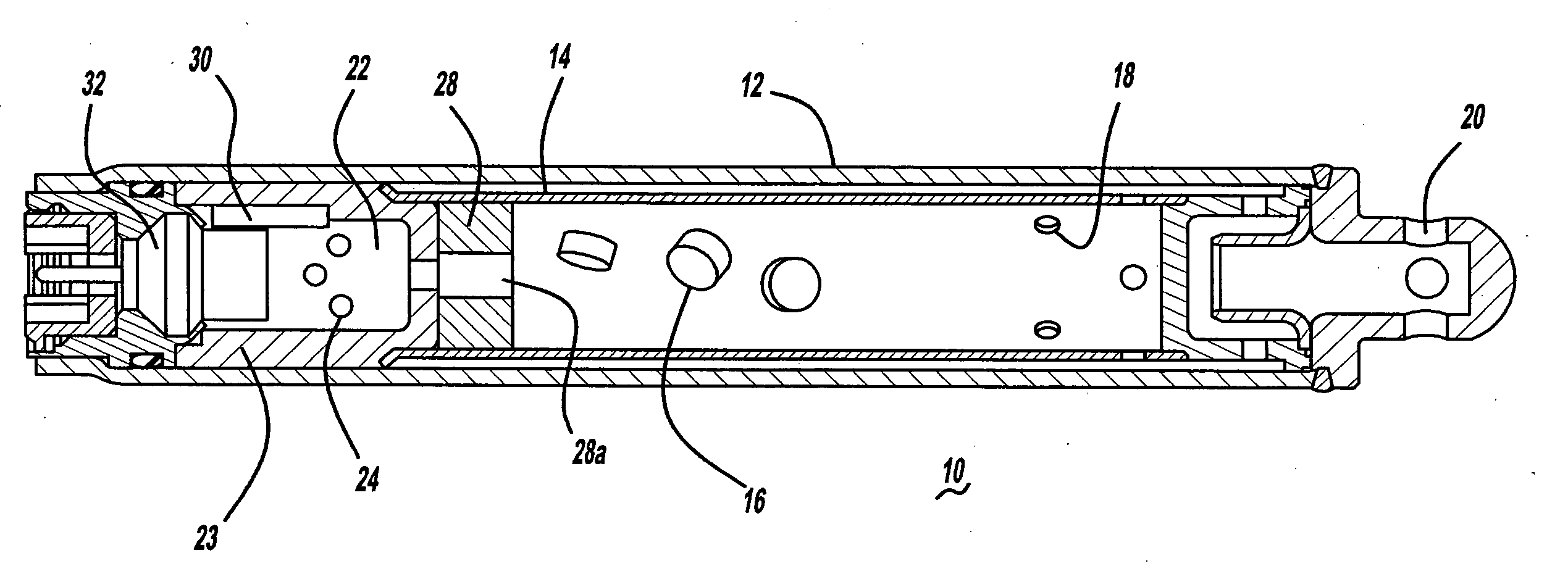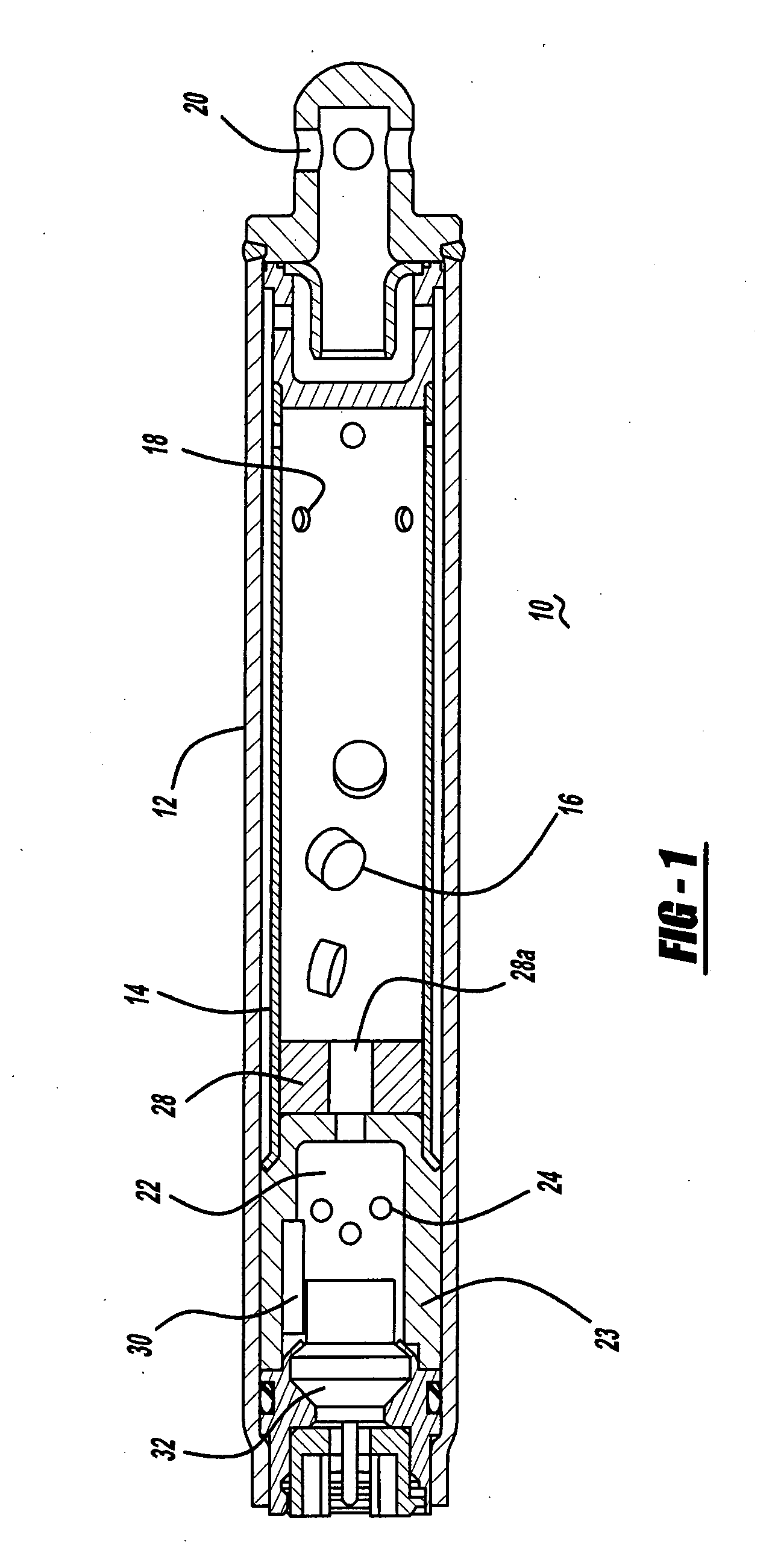Gas generating system and composition
a technology of gas generating system and composition, which is applied in the direction of explosives, pedestrian/occupant safety arrangements, vehicular safety arrangements, etc., can solve the problems of adding weight, cost, volume, and each composition to the system, and adding to the weight, cost, and assembly time needed to construct the gas generating system. , to achieve the effect of simplifying the manufacture of the inflator
- Summary
- Abstract
- Description
- Claims
- Application Information
AI Technical Summary
Benefits of technology
Problems solved by technology
Method used
Image
Examples
example 2
[0022] An exemplary formulation was provided that functions as a booster, an autoignition composition, and a gas generant composition. The formulation contains 5-aminotetrazole at about 19.0 wt %, DL-tartaric acid at about 20.0 wt %, strontium nitrate at about 35.0 wt %, and potassium chlorate at about 26.0 wt %. The constituents were previously and separately ground to a relatively small size in a known manner. They were then dry-mixed to form a substantially homogeneous composition. The composition autoignited at about 140° C. as measured by DSC analysis. The propellant formed from the constituents resulted in an approximate 67% gas yield. The impact sensitivity of this formulation had an HD50 of 11.5 inches as conducted in conformance with the Bruceton Test. The composition was aged for about 480 hours at 107 C and still autoignited at about 145.1° C. as determined by DSC analysis.
example 3
[0023] An exemplary formulation was provided that functions as a booster, an autoignition, and a gas generant composition. The formulation contains 5-aminotetrazole at about 19.0 wt %, DL-tartaric acid at about 19.0 wt %, strontium nitrate at about 50.0 wt %, and potassium chlorate at about 12.0 wt %. The constituents were granulated and dry-mixed to form a substantially homogeneous composition. The composition autoignited at about 141° C. as measured by DSC analysis. The propellant formed from the constituents resulted in an approximate 68.2% gas yield. The impact sensitivity of this formulation had an HD50 of 8.8 inches as conducted in conformance with the Bruceton Test. As shown in FIG. 3, the composition reflected a relatively strong burn rate across several pressure regimes, and in particular indicated burn rates of over 0.8 inches per second (ips). Again referring to FIG. 3, it can be seen that the composition exhibited a burn rate of about 0.2 ips at about 200 psig, about 0.3...
example 4
[0024] An exemplary formulation was provided that functions as a booster, an autoignition, and a gas generant composition. The formulation contains DL-tartaric acid at about 28.0 wt %, strontium nitrate at about 32.0 wt %, and potassium chlorate at about 30.0 wt % and 10% of a secondary fuel. The constituents were previously and separately ground to a relatively small size in a known manner. They were then dry-mixed to form a substantially homogeneous composition. The composition autoignited at about 153° C. as measured by DSC analysis. The propellant formed from the constituents resulted in an approximate 66.1% gas yield. The impact sensitivity of this formulation had an HD50 of 8.1 inches as conducted in conformance with the Bruceton Test.
[0025] As indicated in Examples 1-4, compositions formed in accordance with the present invention (Examples 2-4) preferably autoignite at or below about 180° C. and provide a booster function as well. The compositions of the present invention ma...
PUM
 Login to View More
Login to View More Abstract
Description
Claims
Application Information
 Login to View More
Login to View More - R&D
- Intellectual Property
- Life Sciences
- Materials
- Tech Scout
- Unparalleled Data Quality
- Higher Quality Content
- 60% Fewer Hallucinations
Browse by: Latest US Patents, China's latest patents, Technical Efficacy Thesaurus, Application Domain, Technology Topic, Popular Technical Reports.
© 2025 PatSnap. All rights reserved.Legal|Privacy policy|Modern Slavery Act Transparency Statement|Sitemap|About US| Contact US: help@patsnap.com



